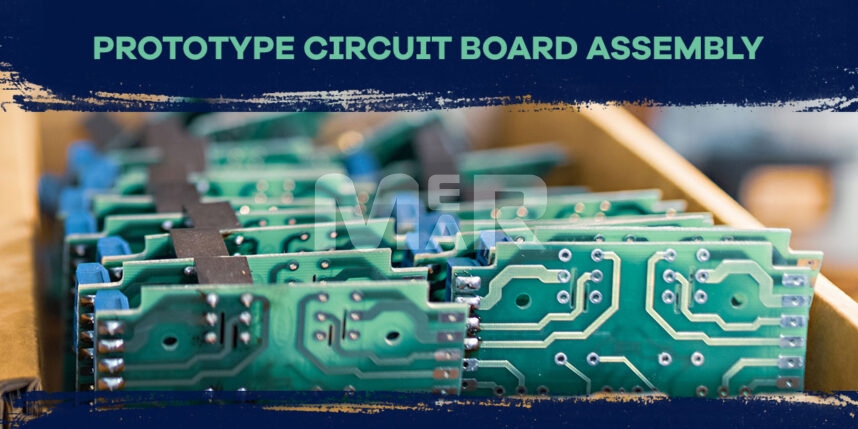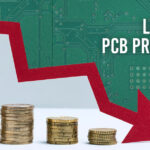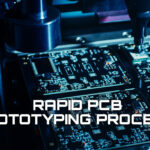How to choose the Right Material for Your next prototype circuit board assembly project?

With the use of PCBs becoming ubiquitous, what is important is the choice of the right material as that is what determines the functionality as well as durability of the PCB.
Let us first look at what are the elements involved in circuit board material.
Circuit Board Material
The circuit board foundation comprises the substrate and the laminate. The substrate is a non-conductive dielectric material. Laminates when used in conjunction with substrates provide the copper foil or surface material.
It is the substrate and laminate that together define the following:
- Electrical properties
- Mechanical Properties
- Thermal properties of the circuit board
Needless to say, that a choice also has to be made of the most accurate board type to meet the bespoke requirements of the project.
Let us look at the various board types in some detail:
FR-4
Especially when it comes to circuit board assembly prototypes, FR-4 is the most widely used material. In fact, FR-4 is a grade of material as opposed to a single material. Made of woven fiberglass cloth with a flame resistant epoxy resin binder, it is highly popular and versatile. It is known for its mechanical strength and its near zero water absorption. With its insulating qualities, it is widely used in a variety of applications and can work in different environmental conditions. Importantly, FR-4 also works well when it comes to affordability, durability, and performance.
Roger’s material
Rogers as a company is known to manufacture laminate materials for circuit boards. Their laminates are known for cores that have high frequency properties. They are known for their performance as well as electrical properties. Besides, they offer several advantages such as:
- Low electrical Signal Loss
- Low Dielectric Loss
- Better Thermal Management
- Improved Impedance Control
Little surprise then that Rogers material is used for high-speed designs, RF, Microwave as well as Mobile and high-power situations.
Metal Core
As opposed to the widely used FR-4, metal core PCBs contain a base metal material. The major advantage offered by these PCBs is that the core can redirect heat away from the components. Heat Dissipation is therefore well managed.
Did you know; the metal core PCB is also referred as a thermal PCB, metal backed PCB or MCPCB.
The metal core of the PCB can be:
- Aluminum Core
- Copper Core
- Mixture of Alloys
In case of requirements of high thermal performance, dielectrics are often being used. Metal Core printed circuit boards are also a great solution where cooling of LEDs is a priority. They are therefore increasingly finding application in lighting applications.
HDI material
HDI boards have a high line distribution density. They are extremely helpful as they not only help reduce the weight and size of equipment, they also improve performance. With blind and buried vias and microvias, HDI PCBs is one of the fastest growing technologies. It lends itself to miniaturization of products and in improving their functionality.
High Tg material
Simply put, Tg or Glass Transition Temperature is the maximum temperature at which the substrate remains rigid. High FR4-Tg material therefore has better resistance to heat and moisture. With a greater adoption of RoHS (Restrictions of Hazardous Substance) PCBs, the importance of High Tg material is going up, as the lead-free solder needs higher temperatures. The High Tg PCBs offer improved stability of the device including the heat and moisture resistance.
How to choose the right PCB material for prototype circuit board assemblies?
As there are a wide variety of choices that are available, it is imperative to analyze the exact needs of your project to be able to use the right material.
The standard FR-4, for example, works effectively in most applications and is also affordable. For prototypes, specifically, this is the material of choice.
However, if you are looking for dielectric properties, Rogers Material will prove to be an excellent choice. High Speed Designs, RF, microwave, or mobile applications particularly benefit from Roger’s material.
An electronics project where heat dissipation is of prime importance will benefit from metal core PCBs.
Similarly, high-tech applications, dense packages, smaller and lighter products benefit from HDI material.
Last, but definitely not the least, high power density and heat generation will benefit from High Tg PCBs. These can also operate in relatively elevated temperatures.
The choice of the right material, of course, is the first and the most crucial step in prototype assembly. In that way, the prototype circuit board assembly will particularly go through close monitoring during the assembly process, so as to watch for any errors as also make any course corrections along the way.
We have over 40 years of experience in complete electronics manufacturing services from designing to final prototypes. We help our clients to select the best suitable material. We follow industry best practices, ensure standard quality PCB assembly prototype that our clients do not deal with recall or rework. In case if you have any requirements, get a quick PCB assembly quote, or get in touch with us at sales@mermarinc.com or call us at (760) 244-6149.








